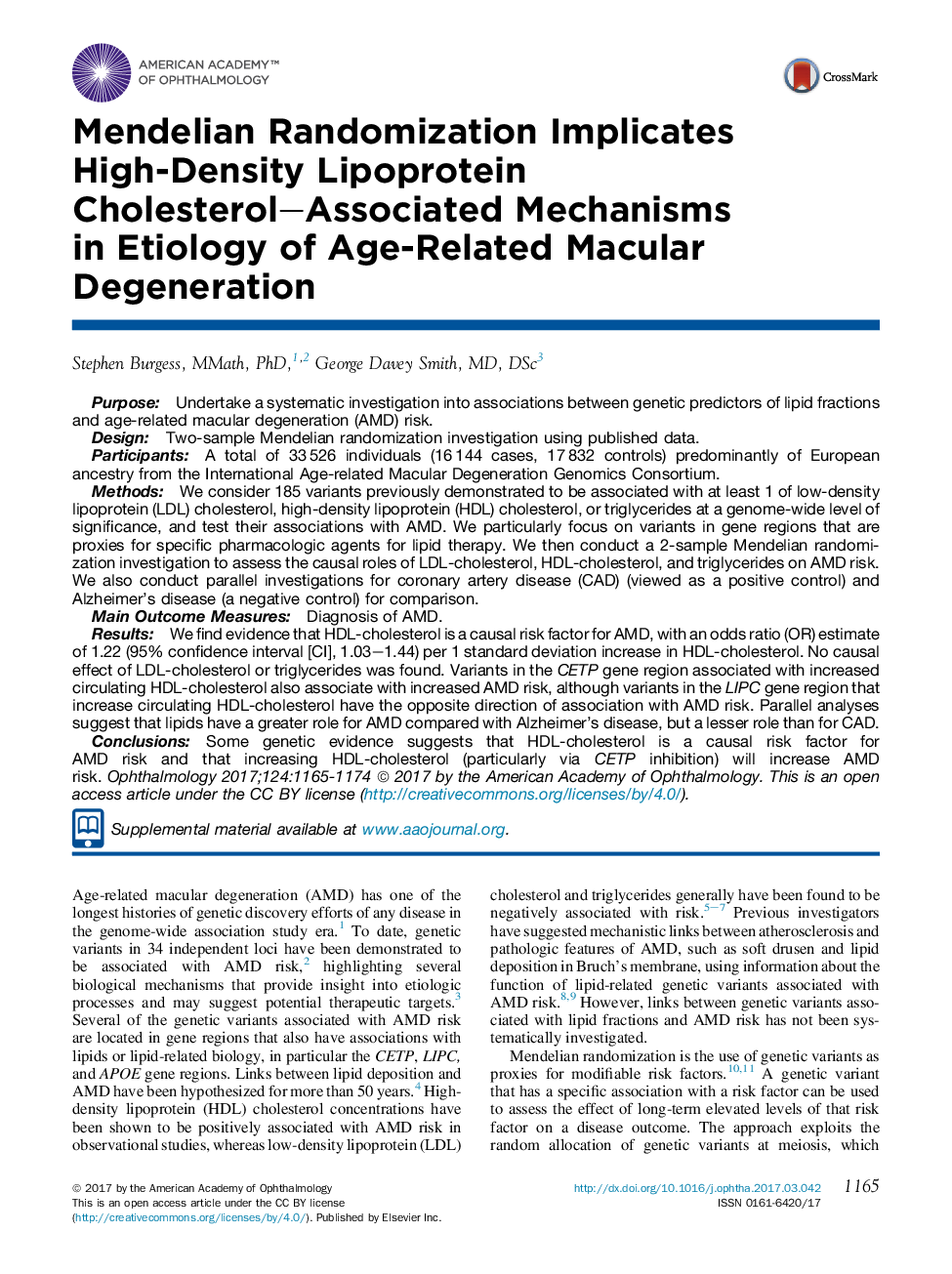| کد مقاله | کد نشریه | سال انتشار | مقاله انگلیسی | نسخه تمام متن |
|---|---|---|---|---|
| 5705198 | 1410736 | 2017 | 10 صفحه PDF | دانلود رایگان |
PurposeUndertake a systematic investigation into associations between genetic predictors of lipid fractions and age-related macular degeneration (AMD) risk.DesignTwo-sample Mendelian randomization investigation using published data.ParticipantsA total of 33â526 individuals (16â144 cases, 17â832 controls) predominantly of European ancestry from the International Age-related Macular Degeneration Genomics Consortium.MethodsWe consider 185 variants previously demonstrated to be associated with at least 1 of low-density lipoprotein (LDL) cholesterol, high-density lipoprotein (HDL) cholesterol, or triglycerides at a genome-wide level of significance, and test their associations with AMD. We particularly focus on variants in gene regions that are proxies for specific pharmacologic agents for lipid therapy. We then conduct a 2-sample Mendelian randomization investigation to assess the causal roles of LDL-cholesterol, HDL-cholesterol, and triglycerides on AMD risk. We also conduct parallel investigations for coronary artery disease (CAD) (viewed as a positive control) and Alzheimer's disease (a negative control) for comparison.Main Outcome MeasuresDiagnosis of AMD.ResultsWe find evidence that HDL-cholesterol is a causal risk factor for AMD, with an odds ratio (OR) estimate of 1.22 (95% confidence interval [CI], 1.03-1.44) per 1 standard deviation increase in HDL-cholesterol. No causal effect of LDL-cholesterol or triglycerides was found. Variants in the CETP gene region associated with increased circulating HDL-cholesterol also associate with increased AMD risk, although variants in the LIPC gene region that increase circulating HDL-cholesterol have the opposite direction of association with AMD risk. Parallel analyses suggest that lipids have a greater role for AMD compared with Alzheimer's disease, but a lesser role than for CAD.ConclusionsSome genetic evidence suggests that HDL-cholesterol is a causal risk factor for AMD risk and that increasing HDL-cholesterol (particularly via CETP inhibition) will increase AMD risk.
Journal: Ophthalmology - Volume 124, Issue 8, August 2017, Pages 1165-1174
